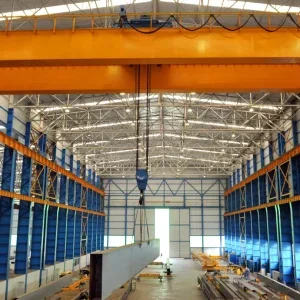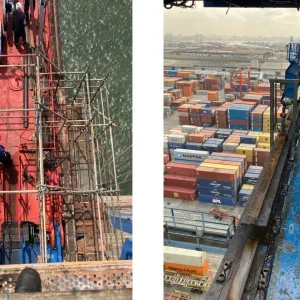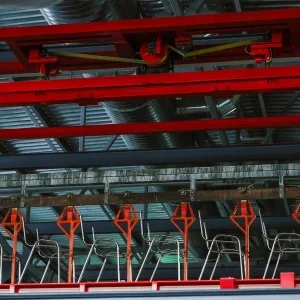For the second quarter of its 2010 fiscal year, CMCO recorded net sales of USD115.2m, down 25.5% on the second quarter of the fiscal year 2009; income from operations of USD0.5m, down 97.1% from USD18.8m; and a net loss of USD2.7m, down 125.7% from a net income of USD10.6m last year.
Backlog in the second quarter was USD69.7m, compared to USD68.6m at the end of the first quarter of the fiscal year 2010. Backlog at the end of the second quarter in the 2009 fiscal year was USD63.8m.
“In addition to the quarter-on-quarter stability in backlog, we saw some sequential improvement in orders during August, September and thus far in October, which may indicate the beginnings of a slight recovery,” said president and CEO Timothy Tevens.
The second quarter results include the contribution of the Pffaf-silberblau business, which was acquired on 1 October, 2008.
Pffaf contributed USD17.9m to the net sales total during the quarter, which would have fallen 37% excluding this figure. Pffaf’s contribution to backlog was USD27m, offsetting declines in CMCO’s other operations.
Lower volumes in all markets saw gross profit down 38.4% from USD45.6m to USD28.1m. However, CMCO said its “aggressive efforts” to reduce or eliminate costs has seen selling expenses fall 9.1% to USD15.6m, and general and administrative costs down 7.6% to USD8.7m.
“We are on track with the consolidation of two operating facilities and downsizing of a third to reduce our manufacturing footprint by approximately 500,000 sq ft, or 25%, without reducing production capacity from previous levels,” said Tevens.
“We expect the estimated USD9m-USD11m in annualised savings from this effort to begin to be realised in the second half of this fiscal year, but be more fully visible in 2011.”
Cash generated by operations in the second quarter was USD19.1m, bringing the total for continuing operations in the first half of the 2010 fiscal year to USD23.9m.
Comparing the six-month period to 30 September, 2009 to the six-month period to 28 September, 2008 the net change in cash and cash equivalents was marked.
In the first half of the fiscal year 2009, cash and cash equivalents rose USD6m from 76m to USD82m; in the comparable period for the 2010 fiscal year, the net change increased to USD15.1m and cash and cash equivalents rose from USD39.2m to USD54.3m.
“Our ability to generate cash throughout the recession reflects not only the early effects of our current cost reduction programme, but also past efficiency improvements we implemented in recent years in anticipation of future cyclical downturns,” said Tevens. “Our strong cash flow enables us to continue to invest in the business to drive future growth.”






